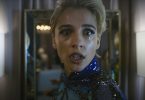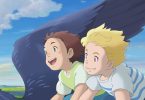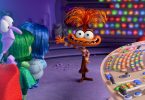Photorealistic animation is nothing new to Hollywood, but director Jon Favreau brought it to a whole new level with 2016’s The Jungle Book, bringing to life the anthropomorphic animals of Rudyard Kipling’s story. Favreau returns to the director’s chair to tackle the equally challenging and acclaimed Disney classic, The Lion King, ditching the hand drawn animation of the original and instead remaking the film and making it look as realistic as possible while keeping the story and songs relatively the same. The end result is a film that looks absolutely stunning on a visual level but lacks the charisma and personality of its story.
For the most part The Lion King is a direct remake of the original animated film, with many of the scenes being recreated shot for shot and line for line. There are some additions and changes made to the script of course to better accommodate for its photorealistic animation, but at no point did I ever think that they made the story any better. They were fine overall, but I still couldn’t help myself thinking that I would rather just watch the original instead.
My biggest problem with the film is that its strive for being as visually realistic as possible doesn’t mesh well with the script. It limits the emotional range possible, specifically with their facial expressions. You can tell when a character is happy, sad, or angry thanks to the dialogue and the actor’s vocal performance but it’s difficult to actually see it on a character’s face because the animation style on allows for the more grandiose of expressions. I cried my eyes out when Mufasa died in the original, and yet I had no emotional connection to Mufasa’s death here even though the dialogue and music cues were relatively the same. In the original, Simba looks cautious and scared as he approaches Mufasa’s body and then there’s a moment of hopefulness when he says his dad thinking that he’ll get up and everything will be alright. You can see the fear, confusion, and heartbreak consume Simba when he realizes that Mufasa won’t be getting up. In the photorealistic version, Simba just looks sad. That’s it. There just isn’t enough subtlety in the animation to capture that range and the film struggles to connect as a result.
That being said, I did fall in love with Timon (Billy Eichner) and Pumbaa (Seth Rogen). They’re absolutely wonderful in the film and steal every scene they’re in with their humor and overall silliness. They take what was great in the original and then built upon that to deliver memorable performances that felt new and refreshing rather than just rehashing and cherry-picking what worked before. I only wish that all of the other characters were treated in the same manner.
The Lion King is not a bad film, but I couldn’t keep myself from thinking that I would be better off just watching the original. It’s a stunning film to look at as individual scenes can be absolutely breathtaking, but it struggles to capture the emotional range of its story. The visuals and dialogue never quite match up, resulting in this weird feeling where you know exactly how characters are supposed to feel but never quite see it in their expressions. The photo-realism is a nice addition to the remake, it’s just not enough to make it worthwhile.
-
The Lion King
Summary
Photorealistic animation is nothing new to Hollywood, but director Jon Favreau brought it to a whole new level with 2016’s The Jungle Book, bringing to life the anthropomorphic animals of Rudyard Kipling’s story. Favreau returns to the director’s chair to tackle the equally challenging and acclaimed Disney classic, The Lion King, ditching the hand drawn animation of the original and instead remaking the film and making it look as realistic as possible while keeping the story and songs relatively the same. The end result is a film that looks absolutely stunning on a visual level but lacks the charisma and personality of its story.







